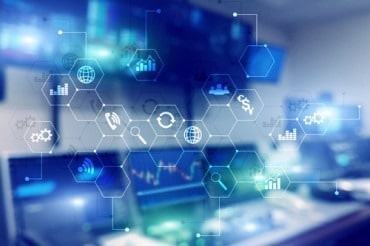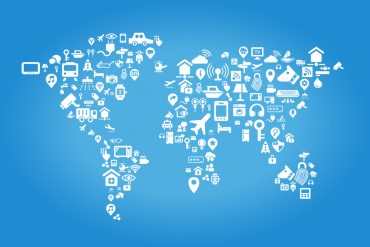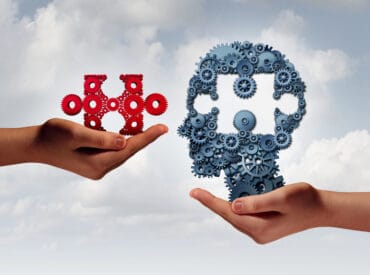
The team uses digital twins and machine learning to monitor the health of its crops using automation, to eventually eliminate the need to send trained divers underwater.
We’ve seen plenty of use cases for digital twins in telematics, supply chain, or healthcare applications, but recently, Siemens and Nemo’s Garden announced an entirely new use case: a reliable method of cultivating herbs, fruit, and vegetables underwater.
Founded in 2021 by the President of Italian scuba diving equipment manufacturer Ocean Reef Group, Nemo’s Garden has an ambitious goal: to create an entirely new system of agriculture that doesn’t rely on traditional methods or the variability of typical ecosystems and uses less ecological resources. They are focused on “areas where environmental conditions, economical, or morphologic reasons make plants growth extremely difficult.”
Gamberini started the project back in 2012 when he wondered if he could create the perfect growing conditions for basil. He realized the sun’s renewable energy and desalination from ocean water could create an ideal microclimate, isolated from negative elements and completely self-sustainable.
Over the following years, Gamberini experimented with different plastic pods — transparent biospheres — until he and his new team at Nemo’s Garden came up with a design of six air-filled clear plastic pods that use hydroponic watering systems. Without soil, the plants grow in a more controlled environment with a nutrient-rich solution that delivers minerals to their roots without any human intervention.
Given how inaccessible they are, the team naturally wants to closely monitor these pods’ health and their plants. Each biosphere has CO2, O2, humidity, temperature, and illumination sensors, which help them optimize for the best possible growing conditions, including reducing the risk of typical plant diseases.
But the team does still visit the biospheres when they need to do a more thorough inspection or make changes. They have already anchored a number of biospheres off the coast of Noli, Italy, at depths of 15-36 feet below sea level. On the shore, Nemo’s Garden maintains a Control Tower, which not only lets them monitor all the aforementioned sensors but also stays in constant contact with their fleet of human divers — an ultrasonic system for those in the water and a full-duplex intercom for when they’re in the biospheres.
Given Gamberini’s experience within the diving world, the startup has access to loads of talented SCUBA operators. But given how quickly they’re trying to iterate, they need to make sure that the biospheres they put under the sea are truly ready for the task. And if they’re going to transition from oddity to commodity, they need to move a lot faster.
See also: In 2022 and Beyond, the World Will Embrace Digital Twins
Enter the digital twins
As Nemo’s Garden looked for ways to speed up their innovation cycles, which were bogged down by design changes and lengthy physical testing processes, they got connected to Siemens, which offered to join the project with its Xcelerator software and services. Today, Siemens software helps power two key processes for the Nemo’s Garden team.
First, the team built a comprehensive digital twin of the current biosphere model. Using Siemens’ Simcenter™ STAR-CCM+™, the Nemo’s Garden team can simulate growing conditions inside of the biosphere and how the biosphere might affect the flow of water around it to minimize impact to the natural ecosystems where they’ll eventually be placed. With this digital twin, Nemo’s Garden doesn’t have to wait for real-world weather conditions or seasonality — or keep putting divers into risky situations — to quickly understand how they can refine their design.
Second, the team uses digital twins and machine learning to monitor the health of their crops using automation, to eventually eliminate the need to send trained divers underwater. With its MindSphere service, Siemens used video of crop growing cycles and compared it to traditional farming to create an algorithm that monitors plant growth holistically.
In the future, Siemens will deploy its Industrial Edge computing devices in each biosphere and connect them to actuators to automatically adjust air circulation, irrigation, and nutritional dosing throughout an entire growing season. That’s how Nemo’s Garden imagines scaling its business to a global agricultural service that can be deployed in any ocean.
The startup says the potential use cases for underwater farming — or at least the adaptable environment within the plastic biospheres — keep growing as more potential partners express interest. A few pharmaceutical companies already rent biospheres to test out this alternative, and the idea could be expanded to seaweed farming, eco-tourism, or underwater stations for scientific research.






























